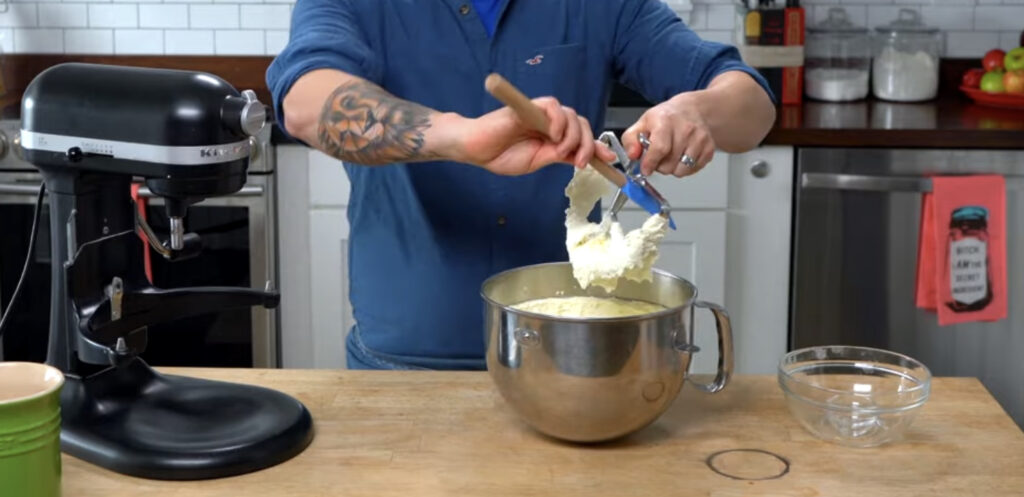When it comes to whipping up delectable desserts or crafting the perfect batch of cookies, you might have heard the term “creaming” tossed around in the kitchen. But what does creaming mean, exactly? In this culinary journey, we’re going to dive deep into the world of creaming, exploring its ins and outs, and uncovering the secrets behind achieving that perfect texture and flavor.
What is Creaming?
Creaming is more than just a fancy term; it’s a fundamental technique in baking. At its core, creaming involves mixing together butter or other fats with sugar until the mixture becomes light and fluffy. This isn’t just about stirring; it’s a bit of kitchen alchemy that can transform your baked goods.
Why Creaming Matters
Creaming isn’t just about aesthetics; it plays a crucial role in the texture and flavor of your baked goods. When fats and sugar are creamed together, tiny air pockets are incorporated into the mixture. These air pockets, along with the sugar, trap moisture during baking, resulting in a tender and moist final product.
The Creaming Process
1. Start with Room Temperature Ingredients
The importance of using room temperature butter cannot be overstated. Cold butter won’t play nice with sugar. It’s like trying to dance with a robot; the chemistry just doesn’t work. Room temperature butter, on the other hand, is soft and pliable, making it a breeze to blend with sugar. Leave your butter out for about 30 minutes before you start. It should be cool to the touch but easily yield to gentle pressure.
2. Measure Your Ingredients Precisely
Baking isn’t a freestyle sport; it’s more like precision engineering. Imagine building a delicate tower of cards—you wouldn’t want any card to be too short or too tall. Similarly, you want the right balance of fat and sugar for successful creaming. Invest in some good measuring cups and spoons, and take your time to measure accurately. It’s the foundation of a well-creamed mixture.
3. Mix the Butter and Sugar
Now, it’s time to get your hands (or your mixer) dirty. Place that room temperature butter and sugar in your trusty mixing bowl. If you’re wielding an electric mixer, start at a low speed to avoid a sugar shower. Gradually increase the speed as the butter and sugar become friends. If you’re going old-school with a wooden spoon, channel your inner arm wrestler. Mix vigorously until the concoction turns pale and fluffy. It’s like whipping up a sweet, buttery cloud.
4. Scrape the Bowl
Creaming can be a bit shy sometimes, hiding bits of butter and sugar in the corners of your bowl. To coax them out, stop occasionally and scrape down the sides with a spatula or the back of a spoon. This ensures that all your ingredients join the creamy party and that no one’s left out in the cold.
5. Don’t Rush It
The final and most crucial step: patience. Creaming is like a slow dance; you can’t rush the waltz. Keep mixing until your mixture undergoes a magical transformation. It’ll become noticeably lighter in both color and texture, taking on a velvety quality. This transformation is the secret to achieving that heavenly texture in your baked goods, so don’t cut it short. Enjoy the process; the results will be worth the wait.
When to Cream
While creaming is most commonly associated with baking, it’s also used in other culinary endeavors. For example, creaming can be part of making mashed potatoes, where butter and cream are combined with the cooked potatoes to create a smooth and creamy side dish.
Common Mistakes to Avoid
Even the best bakers can stumble when creaming. Here are some common mistakes to watch out for:
- Using Cold Butter: It might sound like we’re repeating ourselves, but it’s worth hammering home this point. Cold butter is the arch-nemesis of creaming. Attempting to cream with cold butter is like trying to run a marathon in flip-flops. You’re setting yourself up for a struggle. Room temperature butter, as we’ve mentioned, is your creaming secret weapon. It’s pliable, welcoming, and eager to blend seamlessly with sugar. So, give it time to reach that ideal temperature before you dive into your baking adventure;
- Overmixing: In the world of creaming, less can often be more. While you certainly want to mix your butter and sugar well, overdoing it can lead to a baking catastrophe—a denser final product. Think of it like kneading pizza dough; a gentle touch is often more effective than a heavy hand. The goal is to achieve that light and fluffy texture, so when you see it, stop. It’s like recognizing the perfect wave while surfing; ride it to culinary victory;
- Using the Wrong Sugar: Not all sugars are created equal, and they have their unique talents in the kitchen. For creaming, granulated sugar is your go-to choice. It’s the dependable workhorse that excels at blending with butter to create that wonderful lightness. Other sugars, like powdered sugar or brown sugar, have different roles in baking, but they’re not the stars of the creaming show.
Conclusion
So, what does creaming mean in the world of cooking and baking? It’s a transformative technique that can elevate your dishes from ordinary to extraordinary. By mastering the art of creaming, you’ll unlock the door to creating mouthwatering cakes, cookies, and more. Remember the basics, be patient, and enjoy the journey as you perfect this essential culinary skill. Happy baking!
